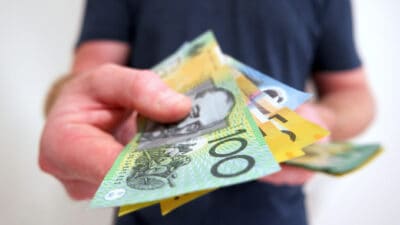Are you sitting on $20,000 right now and have no plans for it? Well, how about putting it to work for you in the share market?
Thanks to ASX shares and the power of compounding, you could turn these funds into a nice source of passive income down the line.
But how? Let's take a look into your options.
Generating passive income
The Australian share market is filled to the brim with companies that share a portion of their profits with shareholders in the form of dividends. This is usually every six months but can be quarterly and even monthly in some cases.
However, our focus will not actually be on dividends initially. That's because if you take money out of the market too early, you're preventing compounding from really working its magic.
Historically, the share market has provided investors with an average return of 10% per annum. Some years it is more, some years it is less. But over a long enough timeframe, it has averaged this.
There is no guarantee that this will be the case in the future, but we're going to use this level of return for the purpose of our forecasts.
With that in mind, if you were to invest $20,000 into ASX shares and generated a 10% per annum return, your investment portfolio would grow to the following (approximately):
- 5 years: $32,000
- 10 years: $52,000
- 20 years: $135,000
- 25 years: $217,000
- 30 years: $350,000
As you can see above, it can take a little time to get going, but once compounding is in full swing, your returns become supercharged.
Make it rain
Now, let's imagine we build a portfolio of high yield ASX dividend shares. Think companies like APA Group (ASX: APA) or Accent Group Ltd (ASX: AX1). What sort of passive income would we generate?
Here's how much these investment portfolios would produce with an average 6% dividend yield:
- 5 years: $1,920
- 10 years: $3,120
- 20 years: $8,100
- 25 years: $13,020
- 30 years: $21,000
As you can see above, if you have the ability to let your portfolio run for 30 years, a portfolio of high yield ASX dividend shares would produce $21,000 of annual passive income.
That's the equivalent of $1,750 a month or almost $58 per day!
It is also worth noting that this example is based on a single investment and does not include any further contributions.
Fuelling the fire
If you wanted to accelerate (and supercharge) the process you could add to your investment portfolio each year.
As a quick example, here's what would happen if you were to start with a $20,000 investment and then add $5,000 a year to your portfolio, all else equal:
- 5 years: $66,000
- 10 years: $140,000
- 20 years: $450,000
- 25 years: $760,000
- 30 years: $1,250,000
The annual passive income from these investment portfolios would increase to the following:
- 5 years: $3,960
- 10 years: $8,400
- 20 years: $27,000
- 25 years: $45,000
- 30 years: $75,000
Overall, I believe this gives investors with cash to burn plenty of food for thought.









